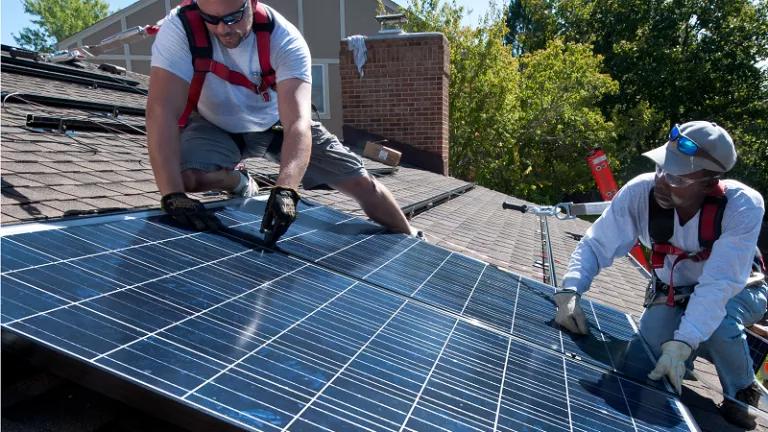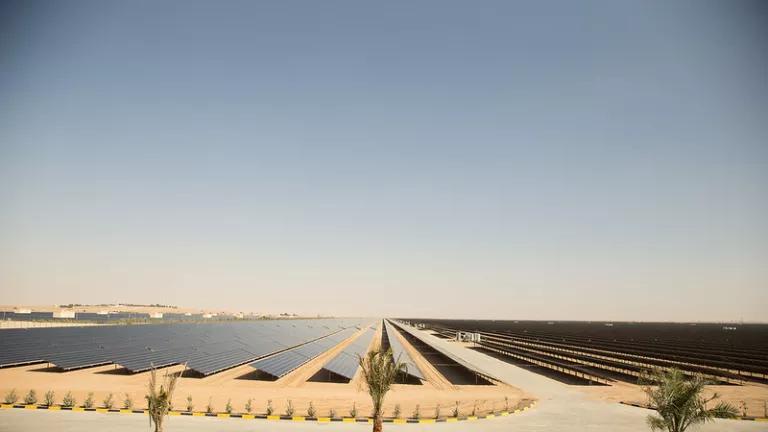Disaster Zones Solar Panel Exemption Would Hurt Homeowners

During workshops on rebuilding in Paradise, community members overwhelmingly expressed support for adhering to current building standards that require solar panels on most new homes. As well they might – rooftop solar is a cost-effective tool for creating safer, more resilient communities. That’s why it’s puzzling that proposed legislation to exempt disaster-related rebuilds from solar continues to advance in Sacramento.
Introduced in the California State Assembly in January, AB 178 (Dahle, Assembly District 1), would exempt certain homes destroyed or damaged because of a disaster from the requirements to install a modest number of solar panels on new or rebuilt homes under California’s updated building energy code, which goes into effect next January 1.
While the bill’s scope was narrowed through committee amendments in the Assembly, it still does not provide the cost relief it intends. Rather, it would saddle homeowners with higher energy costs for decades to come, make fire-prone communities less resilient to respond to the next wildfire, and undermine the state’s efforts to both mitigate the climate crisis that is exacerbating wildfires and protect Californians from such disasters in the future.
Rooftop solar with an appropriate inverter or battery storage can provide essential backup electricity supply to power cell phones, medical equipment, and refrigerators in areas when power lines are down or de-energized, which fire zones will increasingly face as utilities seek to reduce the risk of wildfires. To adapt to this new paradigm, California’s rural communities need more resilient homes, not less.
We hope others will join us in alerting members of the California State Senate to the problems with this legislation.
Laudable Goal, Ill-Advised Plan
Homeowners in vast swaths of California that were devastated by wildfires over the past two years face daunting choices as they begin to rebuild. Given the bewildering array of tasks ahead in ravaged areas like Paradise and the support for rebuilding to code as reported by Sierra Club, who attended the meetings, NRDC strongly supports the goal of removing real obstacles to allow communities to rebuild safely and expeditiously. But solar is not one of those obstacles.
First, adding solar to new construction costs a fraction of other measures required to bring old homes up to code like sprinklers and seismic upgrades. Exempting new construction from these requirements might provide greater upfront cost relief but would be similarly ill-advised. The rush to rebuild should not forsake safety, resiliency, and cost savings.
Second, insurance policies for homeowners often have provisions for rebuilding to code, which are on top of existing limits. For example, a $500,000 policy may include a 20 percent code upgrade provision. But that extra $100,000 is only available to pay for code upgrades. If legislation like AB 178 takes solar out of the code, it could stymie homeowners in disaster areas from getting their insurance policies to cover it.
Don’t Pay Now, Still Save Later
The energy savings from solar significantly outweigh the costs of installation, and even those costs need not burden homeowners.
Single-family homes and low-rise apartment buildings three stories high and less must conform to the new solar standards. California homebuyers have the option of either paying for solar panels outright, leasing them, or entering a power purchase agreement with developers. Leasing solar panels or power purchase agreements add zero cost upfront and save residents more money on their utility bills than the finance payments from the day they move in, reducing the cost of home ownership.
The California Energy Commission (CEC) estimates that for residential homeowners holding a standard 30-year mortgage, the solar standards and other energy efficiency requirements will add about $40 to an average monthly payment, but save consumers $80 monthly on heating, cooling, and lighting bills. That would save occupants more than $28,000 over 30 years, or $19,000 in net present value with a 3 percent annual discount rate, providing badly needed cost savings in a state struggling with affordability.
The solar standards are not a hindrance to builders, either. The new rule has been largely supported by the building industry because of the implementation flexibility built into the code, such as compliance credits when solar is installed together with energy storage.
Rebuilding with Resilience
Integrating solar in new construction is a vital step to facilitate the widespread use of renewable energy and reduce the consumption of fossil fuels, which is driving the climate crisis and making our communities more exposed to the risk of catastrophic wildfires. Victims deserve the chance to save money, now and in the future, and improve their resiliency to power outages. Creating exemptions from standards that ensure California communities rebuild with a clean and affordable backup power supply like rooftop solar serves neither goal.



